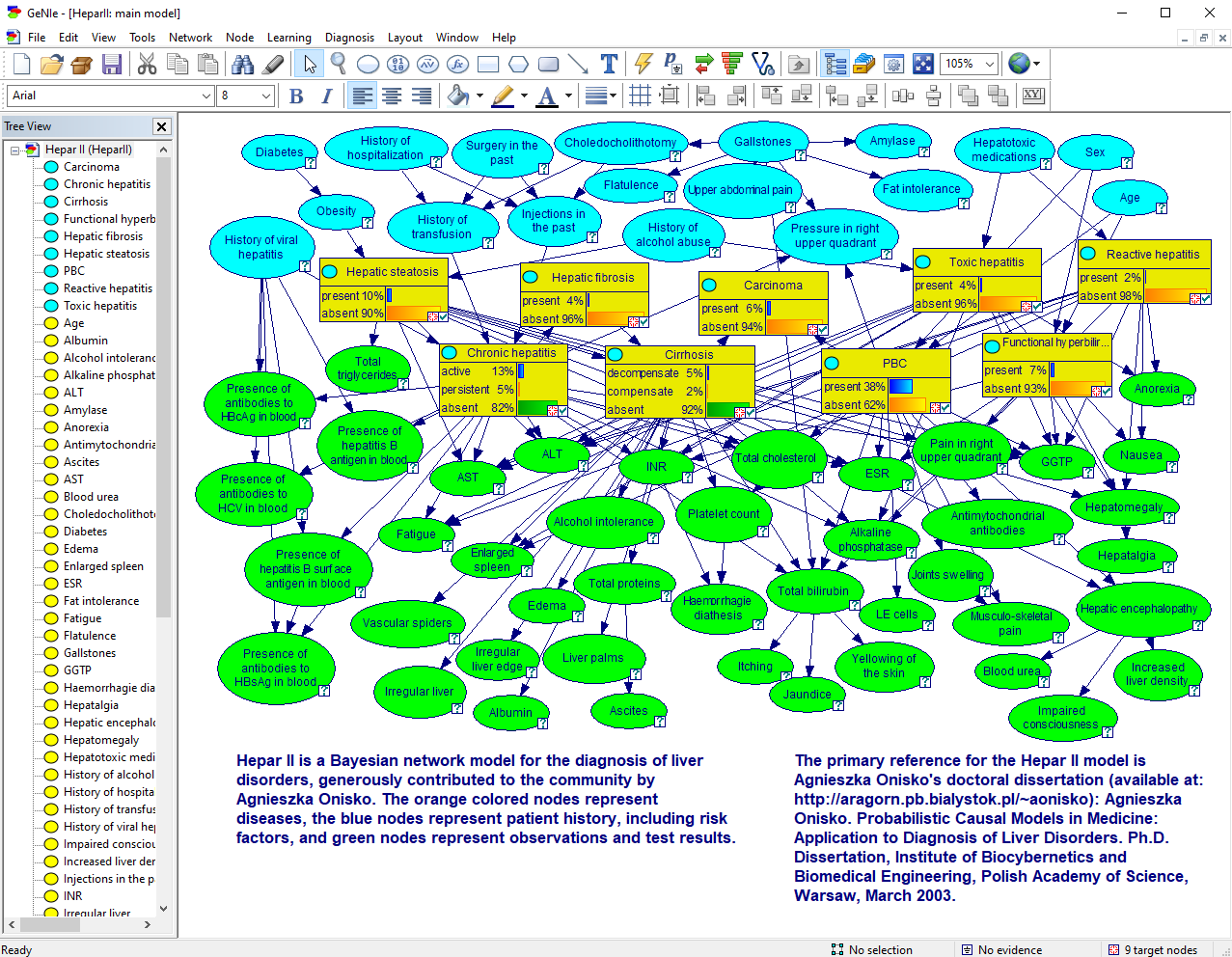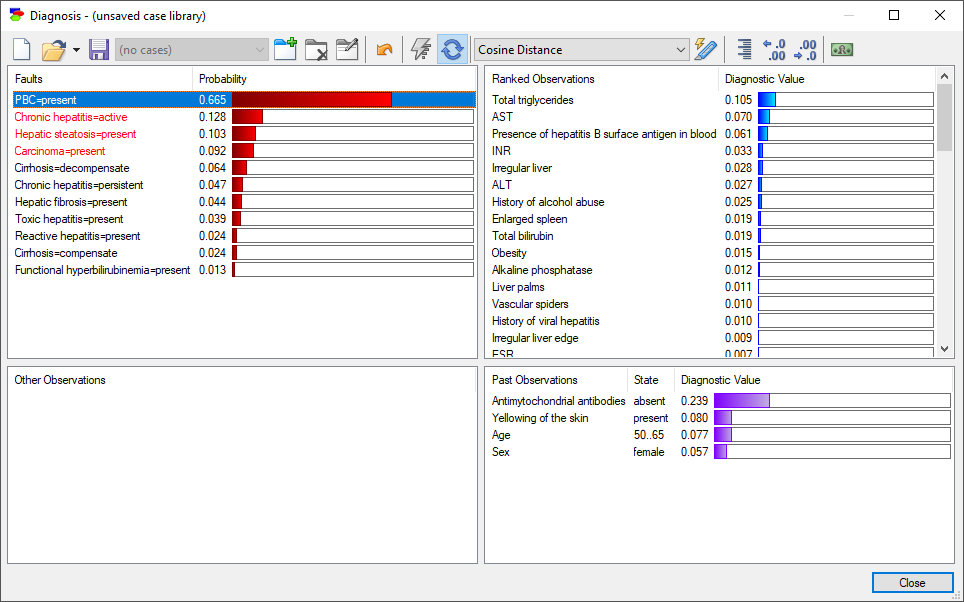The principles of decision-analytic decision support, implemented in GeNIe and SMILE can be applied in practical decision support systems (DSSs). In fact, quite a number of probabilistic decision support systems have been developed, in which GeNIe plays the role of a developer's environment and SMILE plays the role of the reasoning engine. A decision support system based on SMILE can be equipped with a dedicated user interface, both standalone and web-based.
Probabilistic DSSs, applicable to problems involving classification, prediction, and diagnosis, are a new generation of systems that are capable of modeling any real-world decision problem using theoretically sound and practically invaluable methods of probability theory and decision theory. Based on a graphical representation of the problem structure, these systems allow for combining expert opinions with frequency data, gather, manage, and process information to arrive at intelligent solutions.
Probabilistic DSSs are based on a philosophically different principle than rule-based expert systems or systems based on large language models (LLMs) like ChatGPT. While the latter attempt to model the reasoning of a human expert (because of that, they are sometimes called descriptive systems), the former use an axiomatic theory to perform computation (because of that, they are sometimes called normative systems). The soundness of probability theory provides a clear advantage over rule-based systems that usually represent uncertainty in an ad-hoc manner, such as using certainty factors, leading to under-responsiveness or over-responsiveness to evidence and possibly incorrect conclusions. Rule-based systems and LLMs perform amazingly well but along with desirable characteristics of human thinking they copy those characteristics that we would rather avoid, such as the well known ability of LLMs to hallucinate. In all applications, where an error may be costly, such as design, maintenance, or operation of complex engineering systems, such as airplanes or nuclear power plants, normative systems is the only tenable choice.
Probabilistic DSSs are applicable in many domains, among others in medicine (e.g., diagnosis, therapy planning), banking (e.g., credit authorization, fraud detection), insurance (e.g., risk analysis, fraud detection), military (e.g., target detection and prioritization, battle damage assessment, campaign planning), engineering (e.g., process control, machine and process diagnosis), and business (e.g., strategic planning, risk analysis, market analysis).
An example DSS developed using GeNIe and SMILE is the medical diagnostic system Hepar II (Onisko et al. 1999, 2000), available among the example models as HeparII.xdsl. The system aids physicians in diagnosis of liver disorders. The structure of the model, consisting of 70 variables, has been elicited from physician experts, while its numerical parameters have been learned from a database of patient cases.

The Hepar II system is equipped with a simple dedicated user interface that allows for entering various observations such as symptoms and results of medical tests and displays the probability distribution over various possible disorders in the order of most to least likely. It also rank-orders the possible observations according to their diagnostic value.

The system was used both as a diagnostic aid and a training tool.